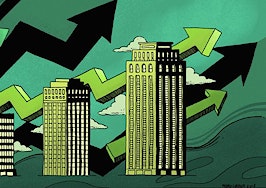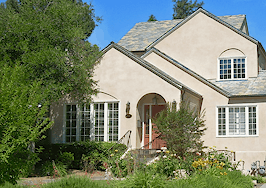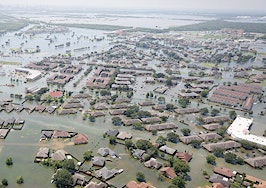Residential housing starts rose 5 percent month-over-month in May, the highest rate since June 2007, according to new statistics released Tuesday by the U.S. Bureau of Labor Statistics and the U.S. Department of Housing and Urban Development (HUD). Despite the increase, economists are saying the numbers are still not as high as they should be, heading into the summer sales season.
Single-family starts jumped 3.9 percent while multi-family starts climbed 7.5 percent month-over-month, according to the data. Residential housing starts rose 20.3 percent from May 2017’s annualized rate of 1,122,000.
“Today, single-family starts broke above 900,000 for the fourth time in the last seven months, reaching 936,000 a level surpassed only one other month since 2007,” said Danielle Hale, chief economist for realtor.com. “While today’s news is encouraging, we are still well short of where single-family starts should be. A ‘normal’ level of single-family starts would be about 1.2 million.”
Inventory has been one of the biggest challenges in the housing market, and the rise of new construction should provide some relief.
Rising costs are making it difficult to build entry-level and affordable homes, according to Hale. Rising lumber prices alone have added $9,000 to the price of new single-family homes, she said, on top of other increased costs for land, labor and various materials.
“New construction is needed to boost overall home inventory and help tame price increases,” Hale said. “Realtor.com listing prices are up 8 percent year-over-year in part because active listings have fallen 6 percent from last May.”
Permits for new construction fell 4.6 percent, month-over-month, which forecasts a possible decline coming in housing construction starts. Permits are up 8.9 percent from last year, however, with Western markets — where permits are up 15.1 percent year-over-year — as the biggest driver.
“While the rise is good news, it’s still not enough for a hot real estate market that is starving for inventory during the peak summer sales season,” said Sam Khater, chief economist for Freddie Mac.
Tariffs on foreign imports could have an adverse effect on housing starts, according to Tendayi Kapfidze, the chief economist at Lending Tree. Look no further than the spike in the cost of washing machines — which rose at the fastest rate since 2008 — a product targeted in an earlier round of tariffs implemented on Feb. 7, Kapfidze said.
“An escalation in the tariff war between the U.S. and China will increase the costs of more household items and could put a damper on housing-related spending,” Kapfidze added.
Lawrence Yun, the chief economist at the National Association of Realtors called the increase in new construction activity, “fantastic news,” as more housing inventory will be available as the year progresses.
“Moreover, construction and real estate industry jobs are being created and boosting the economy,” he added. “Gross domestic product growth of 4 percent to 5 percent is possible in the second quarter, as a result.”





